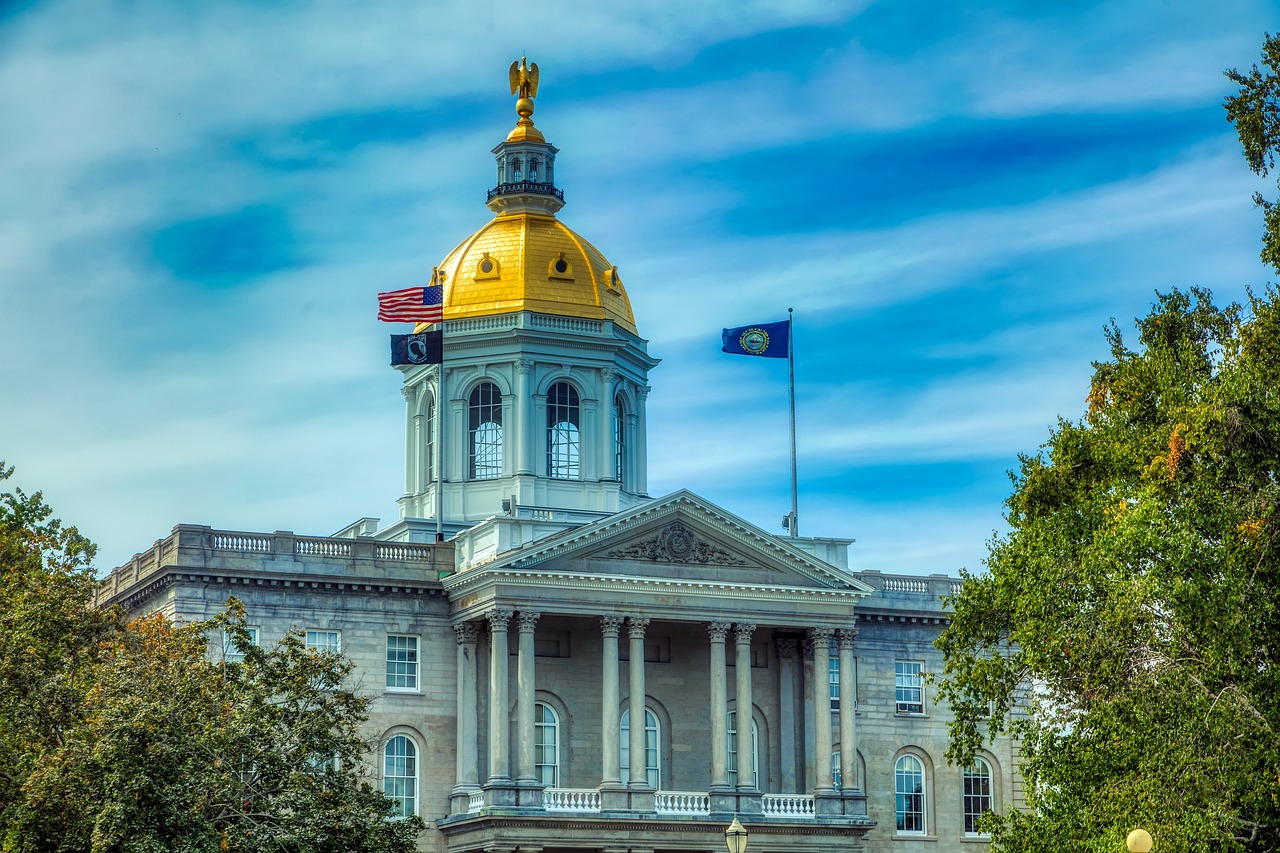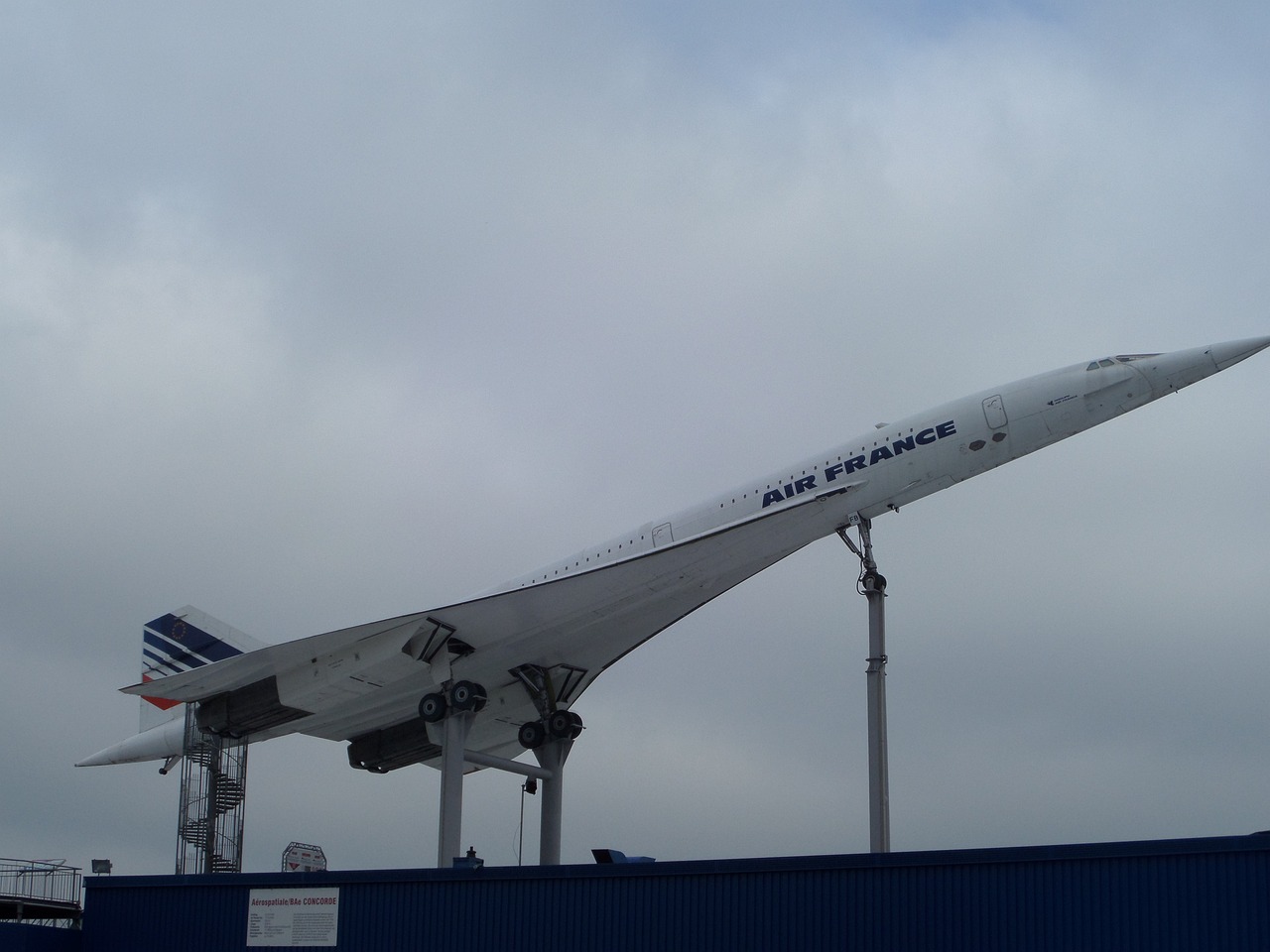Soaring into History: The Legacy of Iconic Aircraft

As we embark on this journey through the clouds, let us reflect on the aircraft that not only defined an era but also paved the way for modern aviation. The 1960s were a remarkable decade, marked by innovation, elegance, and the spirit of exploration.
Iconic Aircraft of the 1960s
Here are some of the most legendary aircraft that took to the skies during this golden age:
- Boeing 707 – The first commercially successful jet airliner that revolutionized air travel.
- Concorde – The supersonic passenger aircraft that became a symbol of luxury and speed.
- Lockheed SR-71 Blackbird – A reconnaissance aircraft known for its incredible speed and altitude capabilities.
- McDonnell Douglas DC-8 – A versatile jetliner that served both passenger and cargo needs.
The Legacy of the Boeing 707
The Boeing 707 was more than just an aircraft; it was a revolution in air travel. Its introduction in 1958 paved the way for the modern jet age, but its impact was felt most profoundly in the 1960s.
| Feature | Details |
|---|---|
| Capacity | Up to 189 passengers |
| Range | More than 5,000 miles |
| Speed | Mach 0.85 |
Experiencing the Concorde
For those fortunate enough to experience it, flying on the Concorde was akin to stepping into the future. With its sleek design and unmatched speed, it offered an experience like no other.
- Speed: Fly from New York to London in under 3.5 hours.
- Luxury: Enjoy gourmet meals and exclusive service.
- History: The Concorde became a beacon of technological advancement.
Preserving the Legacy
As we honor these mighty birds, it’s essential to keep their legacy alive. Many of these iconic aircraft are preserved in museums and airshows, showcasing the advancements in aviation technology.
Join the Conversation
What are your memories of flying in the 1960s? Which aircraft left the biggest impression on you? Share your stories and let’s celebrate the era of aviation together!
From the Boeing 707 to the Concorde, the 1960s were a transformative time in aviation. These aircraft not only changed how we travel but also ignited our imaginations and inspired generations to dream of flight.
A Skyward Journey: The Evolution of Aviation Technology

Welcome aboard our journey through the skies of the 1960s, a decade marked by monumental advancements in aviation technology. As we take flight together, let’s explore the innovations that transformed air travel into a realm of comfort, speed, and safety.
The Dawn of Jet Age
In the early 1960s, air travel was revolutionized with the introduction of jet engines. These powerful engines reduced flight times significantly, making long-distance travel more accessible. Take a moment to remember your first jet flight – the thrill of takeoff, the smooth ascent into the clouds. Can you recall the excitement?
Key Innovations
| Innovation | Description |
|---|---|
| Turbojet Engines | Enabled faster and higher flights, leading to the creation of iconic aircraft like the Boeing 707. |
| Avionics | Advanced navigation and communication systems improved safety and efficiency in air travel. |
| Pressurized Cabins | Allowed aircraft to fly at higher altitudes, providing a smoother ride above turbulence. |
The Birth of Iconic Aircraft
The 1960s saw the emergence of legendary aircraft that defined this era. Let’s take a closer look at a few:
Boeing 707: Known as the first commercially successful jet airliner, it set the standard for future designs.
Concorde: The supersonic passenger jet that captured the imagination with its breathtaking speed.
Douglas DC-8: A reliable and versatile aircraft that served many airlines worldwide.
Safety First
With advancements in technology came enhanced safety measures. Did you know? The introduction of more sophisticated radar systems and automated controls significantly reduced the incidence of accidents. It’s comforting to reflect on how these innovations have kept travelers safe in the skies.
Impact on Society
The evolution of aviation technology in the 1960s not only transformed air travel but also reshaped society. International travel became a symbol of status and adventure, connecting families, cultures, and businesses like never before. Think back to how travel opened new horizons for you or your loved ones.
As we conclude our skyward journey, let’s celebrate the remarkable evolution of aviation technology during the 1960s. These advancements not only made flying faster and safer but also changed the way we connect with the world. What memories do you hold dear from that golden age of aviation?
Winged Wonders: Celebrating the Pioneers of Flight

Introduction to the Era of Innovation
The 1960s marked a significant turning point in aviation history. As we reflect on this remarkable decade, let’s take a moment to appreciate the winged wonders that transformed our skies and set the stage for modern aviation.
Pioneers of Flight: The Innovators
During this golden age, brilliant minds like Neil Armstrong and Chuck Yeager pushed the boundaries of flight. Armstrong’s journey to the moon and Yeager’s breaking of the sound barrier exemplify the spirit of innovation. Can you remember where you were when you first heard of these milestones?
The Iconic Aircraft of the 1960s
Let’s explore some of the most iconic aircraft that graced the skies during this time:
The Boeing 747: Introduced in 1969, it was the first wide-body airliner and revolutionized air travel.
The Concorde: Although it made its first flight in 1969, this supersonic passenger jet promised a new era of fast travel.
The Lockheed SR-71 Blackbird: Known for its incredible speed and altitude, it became the pinnacle of reconnaissance technology.
Technological Advances
Can you recall the excitement of hearing about new technologies? The 1960s saw advancements such as jet engines, avionics, and navigation systems that enhanced safety and efficiency. What advancements do you think made the biggest impact?
Connecting the World
Aviation in the 1960s made the world feel smaller. Families could reunite, and cultures could connect in ways never before possible. Do you have any fond memories of traveling during this period? Share your stories!
Legacy of the 1960s Aviation Pioneers
The legacy of these aviation pioneers continues to inspire future generations. Their courage and vision laid the groundwork for the vast network of air travel we enjoy today. What lessons do you think we can learn from their journeys?
Conclusion: A Tribute to the Mighty Birds
As we celebrate the wonders of flight from the 1960s, let’s remember the pioneers and the aircraft that changed our lives. Their achievements remind us of the power of human ingenuity and the sky’s endless possibilities.
From Propellers to Jets: The Transformative Era of the 1960s
The Dawn of a New Era
As we journey back to the 1960s, we find ourselves at a pivotal moment in aviation history. This thrilling decade marked the transition from traditional propeller-driven aircraft to the sleek and powerful jet engines that would redefine air travel. Let’s explore this fascinating transformation together!
The Age of Propellers
In the early 1960s, many of us remember the classic propeller-driven planes that filled the skies. These aircraft were iconic and represented a time when flying was still a novel experience. Here are some notable models:
- Boeing 707 – The first commercially successful jet airliner.
- Douglas DC-8 – A rival to the Boeing 707 that expanded transcontinental travel.
- Lockheed Constellation – Known for its distinct shape and comfortable flights.
Can you recall your first flight experience in one of these magnificent machines? The sound of the engines, the smell of aviation fuel, and the excitement of soaring through the clouds!
The Jet Revolution
As the 1960s progressed, the aviation industry underwent a dramatic transformation. The introduction of jet engines revolutionized air travel, making it faster and more efficient. Let’s take a closer look:
- Speed: Jets could travel at nearly twice the speed of propeller planes, drastically reducing travel times.
- Altitude: Jets flew higher, above weather disturbances, providing a smoother ride.
- Capacity: Larger jets accommodated more passengers, making air travel accessible to the masses.
Imagine stepping aboard a jetliner for the first time! The rush of excitement as you ascended into the sky, leaving behind the slower, more cumbersome aircraft of earlier years.
Impact on Travel and Society
The shift to jets not only changed the aircraft themselves but also transformed how we traveled. This era saw an increase in global connectivity. Families could visit distant relatives, and businesspeople could reach new markets with ease. The world felt smaller, more interconnected.
Memorable Flights
Reflecting on the 1960s, can you share your memories of flying during this era? Perhaps you recall:
- Your first international flight on a jet.
- Exciting family vacations made possible by affordable air travel.
- The thrill of seeing the world from above during a flight.
These memories are a testament to how aviation evolved and enhanced our lives. What stories do you hold dear from that transformative time?
A Legacy That Endures
Today, as we look back, it’s clear that the 1960s were a defining decade for aviation. The leap from propellers to jets not only changed the aircraft we fly in but also shaped the very essence of travel itself. The impact of this transformation continues to resonate in today’s aviation landscape.
As we remember the mighty birds of the 1960s, let’s celebrate the innovations that brought us together and allowed our dreams to take flight.
Captivating Cockpits: Inside the Planes that Changed the Skies
Introduction to the Cockpit
Step into the world of aviation during the 1960s, a decade that marked a significant evolution in aircraft design and technology. The cockpits of this era were not only functional spaces for pilots but also symbols of innovation and adventure. Let’s explore the captivating interiors that defined this golden age of flight.
The Iconic Boeing 707
The Boeing 707 revolutionized commercial air travel. With its elegant design and advanced cockpit technology, it introduced the world to jet age travel.
- Design: Featuring a spacious cockpit with multiple dials and controls, the Boeing 707 was a pilot’s dream.
- Instruments: The introduction of autopilot systems and navigational aids made long-distance flying safer and more efficient.
The Majestic Concorde
Another marvel of the skies was the Concorde. This supersonic airliner was a feat of engineering that brought a new level of speed to air travel.
- Cockpit Features: The Concorde’s cockpit was equipped with advanced avionics, allowing pilots to fly at over twice the speed of sound.
- Unique Controls: Its control system was unlike any before it, with a side-stick instead of a traditional control yoke.
The Robust Lockheed SR-71 Blackbird
The Lockheed SR-71 Blackbird was not just a plane; it was a symbol of technological prowess. Designed for reconnaissance, its cockpit was highly specialized.
- Instrumentation: The cockpit featured an array of dials and screens, providing real-time data on speed, altitude, and environmental conditions.
- Crew Experience: Pilots wore pressure suits similar to those used in space travel, emphasizing the extreme conditions they faced.
The Versatile Douglas DC-8
The Douglas DC-8 was another key player in the 1960s aviation scene, known for its versatility and reliability.
- Comfortable Cockpit: Designed for ease of access, the cockpit allowed for smooth communication between crew members.
- Modern Instruments: It incorporated early electronic flight instruments, setting the stage for future advancements.
Conclusion: The Legacy of 1960s Cockpits
The cockpits of the 1960s were more than just places for pilots to control their aircraft; they were windows into the future of aviation. Each design and technological advancement played a crucial role in shaping air travel as we know it today. As we look back at these mighty birds, we remember not just the planes themselves, but the spirit of adventure they inspired. What are your favorite memories of flying during this remarkable era?
Flight Paths: The Routes that Shaped Global Travel
In the 1960s, a remarkable transformation took place in the world of air travel. This decade marked the dawn of commercial aviation as we know it today. Let’s embark on a journey through the skies and explore the flight paths that connected continents and altered the way we traveled.
Transatlantic Crossings
The iconic Pan Am and TWA dominated the skies, establishing routes that brought Europe and North America closer than ever. Imagine the thrill of boarding a sleek Boeing 707 or a Douglas DC-8, feeling the excitement ripple through the cabin as the wheels lifted off the ground.
Connecting Cultures
These transatlantic routes were not just flights; they were bridges between cultures. Flights from New York to London, Paris to New York, and even the enchanting journey from Los Angeles to Tokyo opened new horizons for travelers. Can you recall the first time you crossed the ocean by air? The anticipation, the views of clouds, and the sense of adventure were unparalleled.
Emergence of the Jet Age
With the introduction of jet engines, travel time dramatically decreased. What once took days by ship could now be accomplished in a matter of hours. Picture yourself soaring above the Atlantic at cruising altitude, sipping a cool drink while glancing at the vast ocean below. This was more than a flight; it was an experience.
Routes to the East
As we journey to the East, routes connecting the United States to Asia became prominent. The introduction of Pan American Airways flights to cities like Hong Kong and Bangkok opened a new chapter for travelers seeking adventure. How exciting was it to explore the vibrant markets of Bangkok or the serene temples of Kyoto after just a few hours in the air?
Domestic Routes: Connecting the Heartland
Not to be overlooked, domestic routes thrived as well. Flights connecting cities like Chicago, Dallas, and San Francisco made it possible for families to reunite and for businesses to flourish. Do you remember the ease of hopping on a flight to visit loved ones or the excitement of a business trip?
The Legacy Lives On
The flight paths created during the 1960s laid the groundwork for modern air travel, shaping the way we think about distance and connectivity. The experience of flying became a symbol of freedom and exploration. Reflect on your own experiences in the sky. What memories do you cherish?
As we honor the mighty birds of the 1960s, we celebrate not just the aircraft, but the routes that transformed our world into a global village. Your stories and experiences are a testament to the legacy of aviation’s golden age.
Heroes of the Sky: Legendary Pilots of the 1960s
Welcome to an exploration of the remarkable pilots who soared through the skies during the transformative decade of the 1960s. This era was not just about the aircraft but the extraordinary individuals who piloted them. Join us as we honor these aviation pioneers who pushed the boundaries of flight.
The Era of Innovation
The 1960s marked a significant leap in aviation technology. From the introduction of jet airliners to the dawn of supersonic travel, pilots were at the forefront of these changes. Can you recall the excitement of the first commercial flights? Imagine the roar of the engines as they took to the skies.
Profiles of Courage
Let’s delve into the lives of some legendary pilots whose names became synonymous with bravery and skill:
Chuck Yeager – The first pilot to break the sound barrier in 1947, he continued to inspire throughout the 1960s.
Neil Armstrong – Not only a pilot but also a symbol of human achievement, he led the historic Apollo 11 mission.
Jacqueline Cochran – A trailblazer for women in aviation, she set numerous speed records and was a key figure in the Women Airforce Service Pilots (WASP).
Pioneering Achievements
Each of these pilots achieved remarkable milestones. For instance, Neil Armstrong‘s journey to the moon was a defining moment of the 1960s. Can you feel the thrill of watching the lunar landing on television?
Legacy and Influence
The legacy of these pilots extends beyond their individual accomplishments. They inspired countless others to pursue careers in aviation. What stories did you hear from your friends or family about flying during this golden age? Their influence shaped the future of aviation and continues to resonate today.
As we reflect on the heroes of the sky from the 1960s, let us remember the courage, innovation, and dedication they displayed. Their stories are not just about aviation; they are about the human spirit’s quest for adventure and discovery. What is your favorite memory of flying or watching airplanes in that era?
Aviation Milestones: Key Events that Defined an Era
Introduction to Aviation Milestones
As we embark on a journey through the skies of the 1960s, it’s essential to reflect on the aviation milestones that not only defined an era but also shaped the future of air travel. Are you ready to revisit the remarkable events that made this decade truly extraordinary?
1. The Jet Age Takes Flight
In the early 1960s, the aviation industry witnessed the introduction of the jet engine as a standard in commercial air travel. The first jet airliner, the de Havilland Comet, paved the way for future innovations. Can you recall your first experience on a jet airliner?
2. The Boeing 707: A Game Changer
In 1958, the Boeing 707 made its debut, revolutionizing long-distance travel. With its ability to fly transatlantic routes, it opened up the skies for many. Imagine the thrill of boarding this magnificent aircraft for the first time!
3. The Concorde: Supersonic Dreams
In 1969, the Concorde took its first flight, marking the dawn of supersonic travel. With speeds exceeding Mach 2, this aircraft promised to cut travel time in half. Wouldn’t it have been exhilarating to soar above the clouds at such incredible speeds?
4. The Rise of Space Exploration
The 1960s were not just about commercial aviation; they also marked significant achievements in space exploration. The Apollo missions captivated the world, with the historic Apollo 11 landing on the moon in 1969. How did you feel watching this monumental event unfold on your television?
5. The Impact of Regulation
With the introduction of the Federal Aviation Administration (FAA) regulations in the United States, the 1960s saw increased safety measures and standards in aviation. This not only improved passenger safety but also enhanced the overall flying experience. What changes did you notice during your flights?
6. The Era of the Jumbo Jet
The decade closed with the anticipation of the Boeing 747, which would eventually redefine air travel in the coming years. Its design and capacity promised to make flying accessible to the masses. Can you envision the excitement of traveling on a giant like the 747?
Conclusion: A Legacy of Innovation
The 1960s were undeniably a golden age for aviation, filled with milestones that laid the groundwork for modern air travel. As we reflect on these key events, let’s cherish the memories and the innovations that continue to inspire the aviation industry today. What are your fondest memories of flying during this remarkable era?
Nostalgic Flights: Recalling the Joys of Air Travel
Ah, the 1960s! A decade that marked a significant transformation in aviation. It was an era when flying became more than just a means of transportation; it turned into an experience filled with excitement and anticipation. Let’s take a moment to reflect on those joyous flights, the iconic aircraft, and the delightful memories that still warm our hearts.
Remembering the Aircraft
Can you recall the magnificent aircraft that graced the skies during this golden age? Here’s a list of some legendary planes:
- Boeing 707: The first commercially successful jet airliner that connected continents.
- Douglas DC-8: Known for its elegant design and comfort, a favorite among many airlines.
- Concorde: The supersonic beauty that made transatlantic flights a matter of mere hours.
Each of these aircraft had its own charm and character, making every flight a unique adventure.
Interacting with Fellow Passengers
Do you remember the joy of meeting new people while flying? Air travel in the 1960s was often a social event. Here are some things you might have experienced:
- Chatting with strangers: Sharing stories with fellow travelers made long flights feel shorter.
- Dining together: Enjoying meals prepared by attentive flight attendants who treated passengers like royalty.
- Playing games: Engaging in friendly games or card games while soaring high above the clouds.
How many friendships blossomed during those airborne adventures?
The In-Flight Experience
Let’s not forget the luxurious in-flight experience that defined air travel in the 1960s:
- Spacious Seating: Remember the wide seats and ample legroom that allowed for a comfortable journey?
- Gourmet Meals: Flights often featured multi-course meals that would rival fine dining.
- Complimentary Beverages: Enjoying a cocktail or a glass of wine while cruising at 30,000 feet was a common delight.
What was your favorite in-flight meal or drink?
Air Travel as an Adventure
Flying was an adventure filled with anticipation. Every takeoff was accompanied by the sound of roaring engines and the thrill of ascending into the sky. You may recall:
- Watching the world shrink: The breathtaking view of cities and landscapes disappearing beneath the clouds.
- Exciting Destinations: Dreaming of the adventures that awaited at your destination, whether it was a bustling city or a serene beach.
What destinations did you dream of reaching?
A Lasting Legacy
The legacy of 1960s aviation is one of innovation and joy. It laid the groundwork for the modern aviation industry we know today. The bonds formed mid-air, the breathtaking views, and the thrill of exploration continue to resonate with those who experienced it. As we look back, let’s cherish those memories and share our stories with the younger generations.
What are your fondest memories of flying during this golden era?
The Future Takes Flight: How the 1960s Inspired Modern Aviation
The 1960s marked a pivotal decade in the world of aviation, with groundbreaking innovations and iconic aircraft that captured the imagination of millions. Let’s take a moment to reflect on how these advancements have paved the way for modern aviation.
The Jet Age Revolution
As the first commercial jet airliners took to the skies, the world witnessed a transformation in air travel. The introduction of the Boeing 707 and the Douglas DC-8 made flying faster and more accessible than ever before. Can you recall your first flight aboard one of these magnificent machines?
Technological Innovations
The 1960s were not just about new aircraft; they were also about technological advancements that enhanced safety and efficiency. Innovations in radar, navigation systems, and flight controls were crucial. Do you remember the excitement of seeing pilots using these new tools?
Design and Engineering Marvels
Aircraft design took a leap forward with the introduction of sleek fuselages and powerful engines. The Concorde, though it flew later, was conceived in this era, symbolizing speed and luxury. What features do you think modern aircraft still owe to the design philosophies of the 1960s?
Impact on Culture
The aviation boom influenced culture significantly, from films to fashion. Movies like Airport depicted the glamor of air travel, while the jet set lifestyle became aspirational. How did these cultural shifts impact your own experiences with travel?
Environmental Considerations
While the 1960s celebrated progress, they also laid the groundwork for future discussions on environmental impacts. Today’s aircraft are designed with fuel efficiency and sustainability in mind, a trend that began in the 60s. What changes have you noticed in how airlines approach environmental responsibility?
The legacy of the 1960s continues to inspire modern aviation. From technological advancements to cultural shifts, the decade set the stage for the future of flight. As we look forward, it’s essential to appreciate the past. What are your fondest memories of aviation from this golden age?
